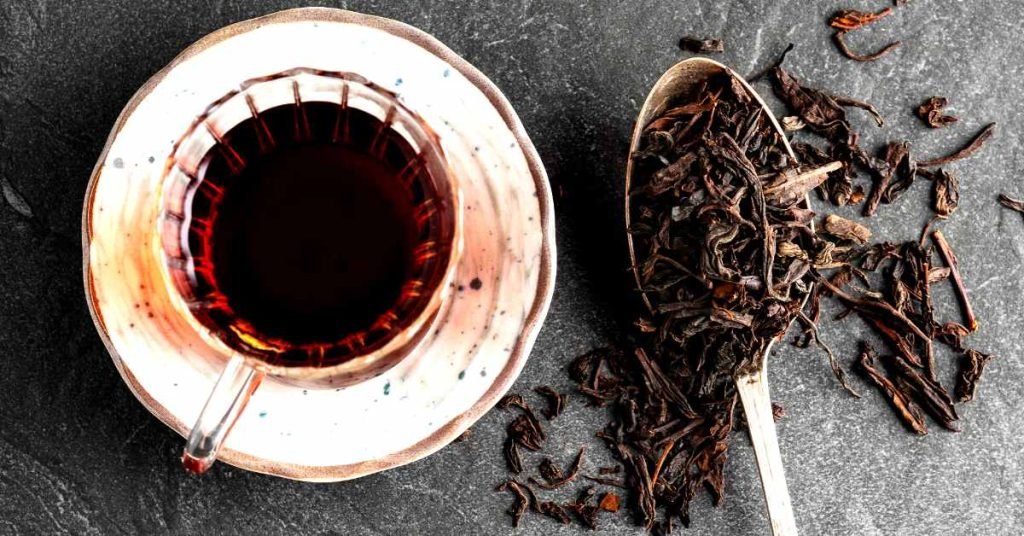Deep vein thrombosis (DVT) is a serious medical condition in which a blood clot forms in one or more deep veins, most commonly in the legs.
These clots can be life-threatening if they break free and travel to the lungs, causing a pulmonary embolism. DVT is a significant health concern, affecting millions of people worldwide.
While medical interventions and medications are crucial for its prevention and treatment, emerging research suggests that tea, a popular beverage enjoyed by people around the globe, may have some potential benefits in reducing the risk of DVT.
In this article, we will explore the link between tea consumption and DVT, as well as the various types of tea and their potential effects on this condition.
Understanding Deep Vein Thrombosis

Before delving into the role of tea in preventing DVT, it is essential to understand the condition itself. Deep vein thrombosis occurs when a blood clot forms in a deep vein, typically in the lower limbs, although it can also affect other parts of the body. Several factors contribute to the development of DVT, including:
- Prolonged Immobility: Long periods of inactivity, such as during extended flights or bed rest, can increase the risk of blood clot formation.
- Surgery or Trauma: Surgeries, especially orthopedic procedures, and severe injuries can disrupt blood flow and increase the likelihood of clot formation.
- Medical Conditions: Certain medical conditions, such as cancer, obesity, and inherited blood clotting disorders, can elevate the risk of DVT.
- Hormonal Changes: Hormonal factors, including birth control pills and hormone replacement therapy, may contribute to clot formation.
- Age and Genetics: Advanced age and a family history of DVT can also increase susceptibility.
The Role of Tea in DVT Prevention
Tea, a beverage made by steeping dried tea leaves or herbal ingredients in hot water, is renowned for its potential health benefits.
Some of its well-documented properties include antioxidants, anti-inflammatory effects, and potential benefits for heart health.

Researchers have begun to investigate whether tea consumption could also play a role in reducing the risk of DVT.
- Antioxidants and Anti-Inflammatory Properties: Tea, particularly green tea, contains high levels of antioxidants called catechins. These compounds have been shown to have anti-inflammatory effects and may help prevent the development of blood clots by reducing inflammation within blood vessels.
- Blood Flow Improvement: Certain tea compounds, such as theanine, have been associated with improved blood flow and reduced platelet aggregation, a process central to clot formation.
- Blood Pressure Regulation: Some types of tea, like hibiscus tea, may help regulate blood pressure. High blood pressure can damage blood vessel walls, increasing the risk of clot formation.
- Weight Management: Regular consumption of tea, especially varieties like green tea, has been linked to weight management. Maintaining a healthy weight is essential for DVT prevention.
Types of Tea and Their Potential Effects on DVT
Various types of tea are enjoyed worldwide, each with its unique blend of compounds and potential health benefits. Here, we explore some of the most popular teas and their potential effects on DVT:
- Green Tea: Green tea is perhaps the most extensively studied tea for its health benefits. Its high catechin content may help reduce inflammation, improve blood flow, and lower the risk of DVT.
- Black Tea: Black tea contains antioxidants known as theaflavins, which have demonstrated anti-inflammatory properties. While not as extensively studied as green tea, it may still offer some protection against DVT.
- Herbal Teas: Herbal teas, such as hibiscus and ginger tea, are caffeine-free options that may help regulate blood pressure and reduce inflammation, contributing to DVT prevention.
- White Tea: White tea is a less processed tea variety that retains many of the beneficial compounds found in green tea, making it a potentially valuable option for those concerned about DVT.
- Turmeric Tea: Turmeric, a spice often used in teas, contains curcumin, a potent anti-inflammatory compound that may help reduce the risk of clot formation.

Final Word
While research into the specific role of tea in preventing deep vein thrombosis is ongoing, the available evidence suggests that tea, particularly green tea, may offer certain benefits that could contribute to reducing the risk of DVT.
However, it is crucial to understand that tea should not be considered a standalone treatment or prevention strategy for DVT. Lifestyle factors, such as maintaining a healthy weight, staying active, and managing underlying medical conditions, are also crucial for DVT prevention.
Before making significant changes to your diet or lifestyle, especially if you have existing medical conditions or are taking medications, it is essential to consult with a healthcare professional.
They can provide personalized guidance on how tea consumption may fit into your overall plan for reducing the risk of deep vein thrombosis and maintaining overall health.
MEDICAL DISCLAIMER
Itsnevernotteatime.com cannot and does not contain medical/health advice. The medical/health information is provided for general and educational purposes only and is not a substitute for professional advice.




